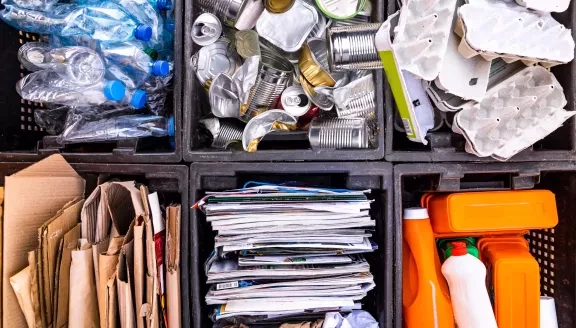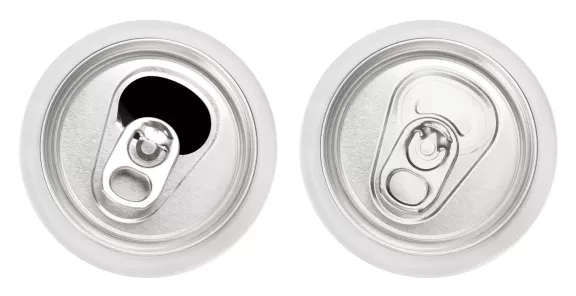
Recycling for a More Sustainable World
The more we recycle, the more we can help preserve precious natural resources. At Republic Services, we leverage our expertise, innovations and technology to ensure we maximize the volume of materials we recycle. We provide recycling solutions for millions of customers across the country, contributing to the circularity of materials and helping communities and our customers meet their diversion goals.
Contributing to the Circular Economy
Recycling is a core tenet of the circular economy where, instead of becoming waste, materials become resources to manufacture new packaging and products. Only about a third of municipal waste is recycled each year.1 That makes recycling a key platform for growth in the sustainability partnerships we forge with customers. Through our recycling services, we can accelerate the transition to a low-carbon economy, drive circularity and create more value.
1
Collection
Empty, clean and dry
recyclables are picked up.
32% of municipal solid waste is recycled annually.1Source: U.S. EPA

Paper
Paper can be repulped into new paper and other products up to 7 times

Cardboard
Cardboard shipping and moving boxes can be recycled into new boxes.

Aluminum/Metal
Aluminum cans can be infinitely recycled.

Plastic
Plastic bottles, cups and jugs will become part of a circular economy via our new Polymer Center.
Recycling aluminum reduces the need to mine materials from the Earth.
Over 1,000tons/day processed at our largest facilities
2
Sorting at Facility
Collected materials arrive at a recycling center for sorting. Materials are sorted using automated technology such as robotic sorters, optical scanners and vision recognition.
Over 1,000tons/day processed at our largest facilities

Recyclables travel up to 1 mile in 2.5 minutes at our facilities
Innovative technology
Optical scanners measure near-infrared light to identify and separate plastics and paper in milliseconds.

We process 5 million tons of materials at 74 recycling facilities each year.

Materials are baled and loaded for delivery to manufacturers. Each bale can weigh up to 2,500 lbs.

Bottle-to-bottle circularity
Plastics will go to our Polymer Center for additional processing. The FIRST integrated plastics recycling facility in the U.S.
Polymer Center3
Manufacturing
Sorted materials—and soon, plastics processed at the Polymer Center—are returned to mills and manufacturers for reuse.
Did you know? This symbol is actually a resin identification code for plastic products and does not mean the item is necessarily recyclable in your market. This leads to non-recyclable items being put into recycling bins. Some state legislation aims to clear up the confusion. Look for the standard recycling "chasing arrows" symbol, like the one on the left.
4
Repeat
Items made from recycled materials make their way back to retail and businesses, starting the process over again.

Republic Services is dedicated to preserving our natural resources by recycling valuable materials from the waste stream. We're in constant pursuit of ideas and technologies that will enable our customers to recycle more and make our operations even more efficient and sustainable. The recycling story is always evolving. We're excited to write the next chapters.
1United States Environmental Protection Agency, “National Overview: Facts and Figures on Materials, Wastes and Recycling,” December 3, 2022.
https://www.epa.gov/facts-and-figures-about-materials-waste-and-recycling/national-overview-facts-and-figures-materials. Accessed November 2023.
*On a combined basis, 2017 baseline year. Key materials include paper, cardboard, metals, plastics and organics.